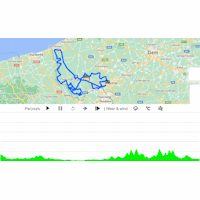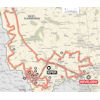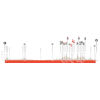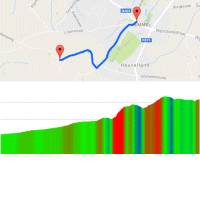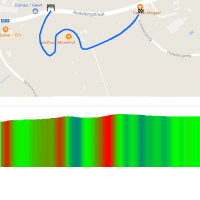The riders set off from under the renowned Menin Gate Memorial in Ypres to traverse the flat fields of Flanders in the first half of the race. Crosswinds are free to do damage on the exposed terrain near the Belgian coast.
Just before reaching De Panne, a town with the widest beaches of the Flemish coast, the riders return. Tension rises as the race approaches the hilly zone and the first obstacle appears at kilometre 166. The Scherpenberg, Baneberg, Monteberg and Kemmelberg follow in quick succession before Gent-Wevelgem continues on a Flemish take to Strade Bianche. Three sections of so-called plugstreets – or unpaved roads – are tackled within 5 kilometres.
Some 10 kilometres after the last plugstreet the combo Monteberg/Kemmelberg returns and with 45 kilometres remaining the riders are back where the climbing started. They hit the Scherpenberg and Baneberg and head for the race’s centerpiece, Kemmelberg, which is now tackled from another side. This final haul up is particularly intimidating. Although it’s only 800 metres long, the average gradient sits at 10.1% and the steepest ramp goes up at 23%. Cobbles round out the experience.
The remaining 34 kilometres are played out on straight and exposed roads. There is only one change of direction, in Ypres, and chasers will have a perfect target if there are any attackers up the road.
The four targets that were up the road last year – Christophe Laporte, Jasper Stuyven, Biniam Girmay, Dries Van Gestel – sneaked away from a group of eighteen just before Ypres. The chase was ineffective and Gent-Wevelgem came down to a four-up sprint. Girmay took the spoils. The Eritrean made history as the first African rider to win a Flemish classic.
Other interesting reads: results and start list Gent-Wevelgem 2023.
Gent – Wevelgem 2023: route, profiles, more
Click on the images to zoom
